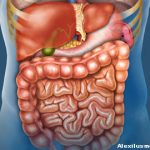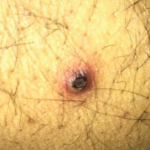A mouse model of colitis has revealed that a large number of CD4+CD44+CD62L- memory T cells reside in bone marrow. This CD4+ T cell population appears to act as an osteoclastogenic population during IBD. Research is now focused on better characterizing these putative osteoclastogenic T cells. Studies in IBD suggest that they consist of TNF-α producing Th17 cells that are capable only of limited production of interferon ɣ. However, researchers have yet to identify how these cells are maintained in bone marrow.
Lara C. Pullen, PhD, is a medical writer based in the Chicago area.
ad goes here:advert-1
ADVERTISEMENT
SCROLL TO CONTINUE
Reference
- Wakkach A, Rouleau M, Blin-Wakkach C. Osteoimmune interactions in inflammatory bowel disease: Central role of bone marrow Th17 TNFα cells in osteoclastogenesis. Front Immunol. 2015 Dec 18;6:640. doi: 10.3389/fimmu.2015.00640. eCollection 2015.

